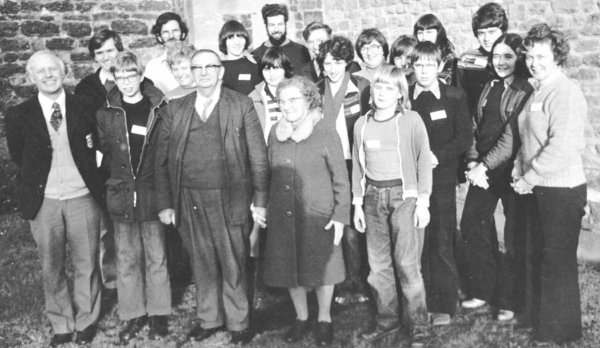
| Home page | Bellringing | Talks & lectures | Fell walking | Settle - Carlisle | Metal sculpture | Brickwork | Journeys | Ergonomics | The rest | Site map |
Men dominated tower bell ringing for centuries, and in the Victorian era it was an almost exclusively male activity. There were a few exceptions, for example records at Kensington mention women ringing in the 1850s. The first landmark performance by a woman was in 1896, when Miss Alice White rang in a tower bell peal at Basingstoke. (A peal is the ‘gold standard’ ringing performance, around three hours of continuous ringing on bells of average weight.) In 1912, an all women band rang a peal at Cubitt Town, Isle of Dogs in London, and a few months later The Ladies' Guild of Change Ringers was founded. This was against the wider social backdrop of women campaigning for suffrage.
Wokingham wasn’t so progressive as far as we know. The earliest ringer we know is Thomas Houlton around 1820. He was one of a long line of Houltons who rang in Wokingham until the 1940s. Churchwarden’s accounts show payments to Houlton for bell ropes and for special ringing. A couple of the payments were to his wife Mary. Maybe she was also a ringer, or maybe she just passed the money to her husband. Local membership records began in 1880 and the 60 or so ringers recorded between then and the First World War were all men.
The first women ringers we know joined in 1918, at a time when women had entered the workplace to fill in for men away at the front. Two sisters, E and M Fielder gave up after a year, but the other two rang for many more years.
Vera Robinson was the daughter of Rev FE Robinson, and they are buried together in All Saints churchyard. He was the first person ever to ring 1000 peals and she was the first Wokingham woman to ring a peal, in February 1924 at All Saints. She wasn’t the first woman to ring a peal in Wokingham though. That was Mary Chillingworth, a Bradfield ringer, who rang a peal at All Saints on All Saints Day 1913.
Alice Walker was Vera’s close friend. She was a less accomplished ringer but is said to have encouraged many young lads to ring. She was deeply involved in church life – as assistant organist for a while, and as the first Diocesan Sunday Schools Organiser. She also gave ‘delightful illustrated lectures’ with titles like: ‘Birds, Butterflies and possibly a Bat’.
More women took up ringing, and by the mid 20th century the band was roughly half & half men and women, as it still is.

1902: 100% male

1978: 50–50 male–female
For more information about ringing, see: allsaintswokinghambells.org.uk/
John Harrison, October 2019
| Back to Top | Back to Articles | Back to What's New | Return to Home page |